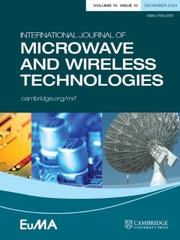No CrossRef data available.
Compensation of transmission loss in degraded connector using a passive equalization method
Published online by Cambridge University Press: 21 November 2025
Abstract
Radio frequency (RF) coaxial connectors are crucial in high-speed digital systems for data transmission. Connectors applied in harsh environments will be degraded over time, affecting the signal integrity. At present, a suitable equalization technology is of substantial value for enhancing the quality of high-speed signal transmission. However, there is limited research focusing on specific equalization designs for degraded connectors. In this current work, based on the theoretical analysis, simulations validation and experimental testing, an equivalent circuit model of the degraded connector was developed. Furthermore, an equalization structure consisting of series resistance and capacitance was proposed. The transmission loss caused by the connector degradation was compensated effectively using this method. Meanwhile, eye diagram characteristics were improved significantly at the receiver where zero timing jitter and an almost full eye opening were achieved. Equalization enhances the eye opening factor by over 50% compared to the uncompensated system. This paper integrates electrical contact theory with high-speed equalization design. Tools and guidance were provided through the proposed modeling techniques for studying equalization effects of this degraded connector system in designs and applications.
Information
- Type
- Research Paper
- Information
- Copyright
- © The Author(s), 2025. Published by Cambridge University Press in association with The European Microwave Association.


